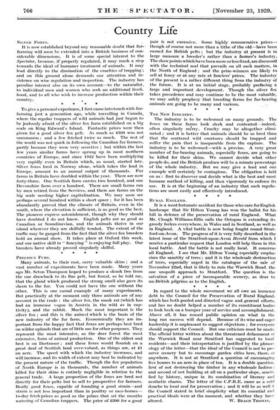To give a personal experience, I first came into touch
with fur- farming just a generation ago, while- travelling in Canada, where the regular trappers of wild animals had just begun to be jealously afraid of the silver fox farm established on a big scale on King Edward's Island. Fantastic prices were then given for a good silver fox pelt. As much as £300 was not uncommon ; and a few fetched twice as much. The rest of the world was not quick in following the Canadian fur farmers, partly because they were very secretive ; but within the last few years similar farms have sprung up in most northern countries of Europe, and since 1922 have been multiplying very rapidly even in Britain which, as usual, started late. Silver foxes bred in Norway alone, which takes the lead in Europe, amount to an annual output of thousands. Fur farms in Britain have doubled within the year. There are now forty-three. One Scottish farm carries two hundred, and one Devonshire farm over a hundred. There are small farms run by men retired from the Services, and there are farms on the big scale needing higher capitalization. We may soon see perhaps several hundred within a short space ; for it has been abundantly proved that the climate of Britain, even in the south, where the elevation is sufficient, is as good as the best. The pioneers express astonishment, though why they should have doubted I do not know. English pelts are as good as Canadian or Scandinavian, and the animals thrive in our island wherever they are skilfully tended. The extent of the traffic may be gauged from the fact that the silver fox breeders hold an annual show. It takes place at Oxford this week, and our native skill in " fancying " is enjoying full play. Our breeders have already proved singularly skilful.






























































 Previous page
Previous page